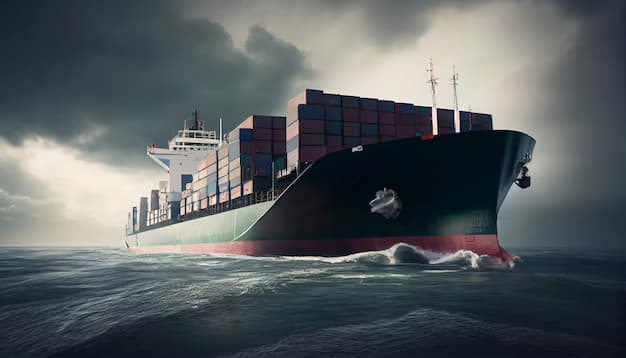As the sun rises over bustling ports, stacks of shipping containers stand tall, their metal surfaces gleaming in the morning light. These unassuming giants are the promoters of our global economy, silently shuttling goods across oceans, highways, and railways. From sleek electronics to fragrant exotic spices, they cradle the heartbeat of commerce.

But lately, these metal sentinels have stepped into the spotlight for an unexpected encore: inflation. Yes, you read that right—those seemingly mundane containers are now headlining the economic drama. Let’s dive into this container crunch and unravel the tale of how they went from silent workhorses to elusive unicorns.
Why the Shortage?
Pandemic Whiplash: When COVID-19 swept across the globe, factories shut down, and demand plummeted. Containers piled up in ports, waiting for goods that weren’t being produced. As economies reopened, the sudden surge in demand caught everyone off guard.
Imbalanced Trade: Containers usually follow a predictable route: China to the U.S. and Europe, laden with goods. But during the pandemic, the flow reversed. Empty containers piled up in the West, while Asia faced a shortage. The result? Skyrocketing container prices.
Congestion and Chaos: Ports struggled to handle the influx of containers. Ships idled at sea, waiting for berths. Delays rippled through the supply chain, affecting everything from electronics to sneakers.
Inflation’s Unlikely Culprit
Now, let’s connect the dots. How do shipping containers fuel inflation?
Rising Costs: Container prices surged. Shipping companies passed the buck to consumers. Importers paid more, and those costs trickled down to retail prices. That new iPhone? Blame it on the container.
Supply Bottlenecks: When containers are scarce, delays occur. Manufacturers can’t get raw materials on time. Factories slow down, production stalls, and prices rise. It’s a domino effect.
Hidden Costs: Ever wondered why your avocado costs more? It traveled in a container. Higher shipping costs mean higher prices for imported goods. And guess what? Everything’s imported these days.
Strategic Adaptations for Businesses
As businesses navigate the choppy waters of the container shortage, strategic adaptations become essential. Here are practical steps to weather this storm:
Increase Inventories: A prudent move is to stockpile inventory. Anticipate longer lead times due to container scarcity and plan accordingly. Having a buffer can mitigate supply disruptions.
Adapt to Reduced Container-Free Times: Shipping companies are tightening their schedules. Be prepared for shorter free times at ports. Efficiently load and unload containers to maximize usage.
Expect Higher Per Diems: Delays and landside bottlenecks are inevitable. Expect increased per diem charges for containers. Budget for these additional costs in your logistics planning.
Prioritize Long-Term Contracts: Secure stable capacity by entering into long-term contracts with carriers. This ensures a steady flow of containers and minimizes last-minute surprises.
Consider Air Freight Alternatives: For urgent flows, explore air freight options. While costlier, air transport can be a lifeline when container availability is scarce.
The Ripple Effect
Inflation isn’t just about shipping containers; it’s about confidence. When consumers see prices climbing, they tighten their purse strings. Businesses hesitate to invest. Central banks raise interest rates. Suddenly, inflation isn’t just a buzzword; it’s a reality.
So, next time you sip that imported coffee or unbox a shiny gadget, remember the humble shipping container. It’s more than metal; it’s an economic barometer. And as long as it remains scarce, inflation will keep knocking at our doors.
Therefore, to simply put it short, the container crunch isn’t just a logistical hiccup; it’s a lesson in interconnectedness. So, can we untangle this web? Perhaps. But for now, let’s keep an eye on those metal boxes—they hold the key to our wallets.






